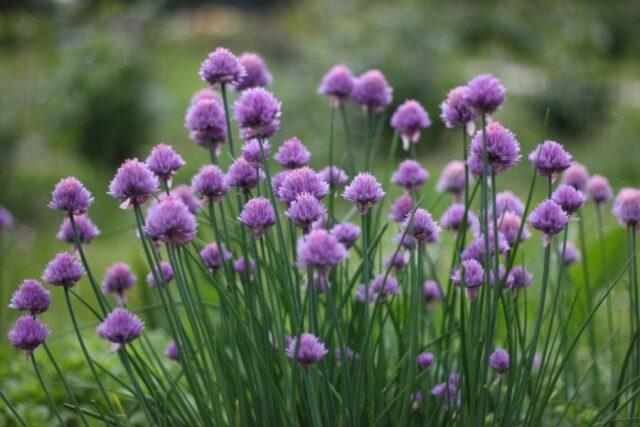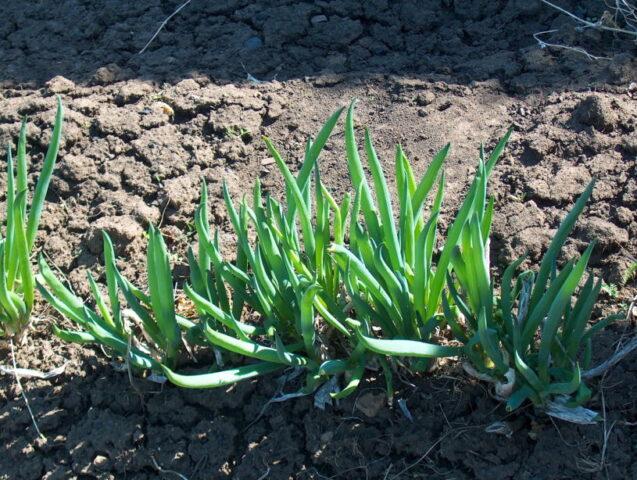Content
Perennial onion is a useful plant that comes in many varieties. The culture is used in cooking and medicine; it is grown for greens and turnips in almost any garden.
Characteristics of perennial onions
The external features and dimensions of perennial onions depend on the specific variety. However, plants also have common features.
The main feature of perennials is that they develop in one place for 4-5 years and do not require annual replanting. Plants of this type are characterized by increased resistance to diseases and pests, tolerate frost well and feel comfortable even on poor soils. They bear fruit from spring to autumn and after each cutting they regrow succulent feathers.

Some varieties of perennial onions bloom very beautifully, which allows them to be used for decorative purposes.
Advantages and disadvantages
Perennial onions have important advantages over annual varieties. These include:
- development in one place for several years;
- significant content of vitamins and minerals in feathers;
- high frost resistance down to -40 °C;
- good yield;
- unpretentiousness and resistance to fungi and pests;
- early ripening.
However, culture has its drawbacks:
- sensitive to weeds and requires constant weeding;
- has small and low-value underground heads.
Despite the fact that the crop bears fruit only in the above-ground part, gardeners love perennial onions for their ease of cultivation and juicy, pungent-tasting feathers.
Varieties of perennial onions with photos and names
There are many names for perennial onions. Some species are more often used for decorative purposes and for treatment, while others are grown to be added to culinary dishes.
Onion
The batun, or fistulosum (Allium fistulosum), grows up to 70 cm. In appearance it is very similar to the onion - it has the same juicy long feathers of a dark green color, hollow from the inside. But the false bulb of the perennial is small and not suitable for food consumption. Batun produces strong and powerful roots and bears fruit well for up to six years in one place.

Batun is one of the first to sprout in the spring garden and quickly produces a harvest of feathers.
Slime
The slime, or drooping bow (Allium nutans), is distinguished by the unusual shape of its feathers - wide and rounded, they gradually taper at the bottom. The plant loves moist soils, can take root up to 25 cm underground, and is highly frost-resistant.It produces a juicy and tender harvest; the leaves have a pleasant taste and valuable medicinal properties.

Slime can grow in both sun and shade
Multi-tiered
Multi-tiered or horned onions (Allium proliferum) bear unusual arrows with airy oblong turnips instead of inflorescences, collected in several pieces. They grow into green feathers suitable for eating. Puffed onions can also be eaten fresh and added to a variety of dishes. The species does not have a dormant period and, in comfortable conditions, can bear fruit continuously throughout the year.

Multi-tiered onions live in one place for up to seven years
fragrant onion
Sweet onion (Allium odorum) bears wide, large leaves that stretch up to 50 cm. It grows quickly after cutting and can produce harvests right up to frost. From the second year of life, beautiful flowering begins - in the spring, white umbrellas with a pleasant almond aroma bloom on the shoots.

Sweet onion has the properties of a honey plant
Schnitt
Chives, or chives (Allium schoenoprasum), produce feathers up to 45 cm high. It has good nutritional qualities at a young age. After flowering it becomes harsh and less tasty, so it is better to cut it in the spring. Blooms with beautiful spherical purple or soft pink buds. Chives are often planted in borders and flower beds and are also grown in covered pots.

Chives can bloom until late autumn
shallot
Shallots (Allium ascalonicum) are one of the perennial varieties in which not only the green feathers, but also the underground parts can be eaten.Often found in French recipes, it has a mild taste. Quickly grows new leaves to replace cut ones and produces large yields of greenery throughout the season.

Shallots have almost no characteristic pungent odor
Altai onion
Altai, Siberian or mountain onions (Allium altaicum) are frost-resistant down to -45 ° C and tolerate drought well. It grows wild in Altai and Central Asia, as well as in China. It bears tubular leaves with a bluish waxy coating, has a spicy, spicy taste and good juiciness. When cultivated, it yields crops up to four times per season, but the last harvest must be done no later than mid-August.

Altai onion has bulbs that are uncharacteristically large for a perennial species, up to 5 cm in diameter.
Aflatunsky
Aflatun onion (Allium aflatunense) has a very short growing season of only 2-3 months. The plant begins to develop immediately after the snow melts, and before the onset of summer heat it already flowers and produces seeds. In culture, it is valued primarily for its decorative large inflorescences of purple or pink hue. You can eat the early greens of Aflatun onions; underground turnips are also edible, although they require long soaking and boiling.

Aflatun onion blooms from May to the end of June
Features of growing perennial onions
Growing perennial onions for plumes is quite simple. It is necessary to observe planting dates and select the right place for garden crops.
When to plant perennial onions on greens
The earliest greenery can be obtained by planting perennial onions before winter. In this case, the seeds are sown just before frost.In the spring, with the onset of a thaw, the shoots will sprout almost immediately after the snow melts.
You can also plant perennial onions on greens at the beginning of the growing season. In this case, the seeds are sown after the soil has thawed and the snow has melted. The plant will produce succulent feathers approximately two weeks later than during winter planting.
Where to plant perennial onions
For planting perennial onions, light, neutral or slightly acidic soil away from groundwater is best suited. The place should be well lit.
It is necessary to prepare the beds for the crop in advance - in the summer for winter sowing or in the fall if the procedure will be carried out in the spring. The site is dug up and weeds are removed, and phosphorus-potassium fertilizer is applied. When planting in spring, nitrogen fertilizers must be added to the soil immediately before the procedure.
Planting scheme for perennial onions
There are several ways to plant perennial onions on your site. The peculiarity of the culture is that it can be propagated not only by seeds, but also vegetatively.
Seedling method
In the spring, to quickly obtain fresh greens, the seedling method of growing is practiced:
- In March, perennial onion seeds are soaked in a weak solution of potassium permanganate and dried.
- The material is placed in nutritious soil with the addition of sand, watered and covered with film.
- Until the emergence of shoots, the container is kept at a temperature of 20-22 °C, and when green sprouts appear, it is reduced to 18-20 °C.
The seedlings are transferred to the garden in mid-May.

Despite the cold resistance of perennial onions, it is better to plant them in the ground after frosts have ended.
Winter sowing
Sowing perennial onions in the fall is popular among gardeners. The diagram looks like this:
- The site is dug up in advance and fertilized with phosphorus-potassium minerals.
- When the soil temperature drops to 3-4 °C, seeds are planted in shallow furrows located 20-25 cm from each other.
- Sprinkle the material with damp soil and mulch it with an insulating layer on top.
During the winter, some of the seeds will inevitably die. Therefore, the sowing rate is increased by 20-25% compared to the usual one.

Winter onions sprout about two weeks earlier than spring onions
Rhizome division
Perennial onions can be propagated by division. The algorithm is as follows:
- From mid-spring to late summer, healthy plants 3-4 years old are dug out of the ground.
- Cut the underground bulbs so that at least one developed root remains on each part.
- The cuttings are immediately transferred to the prepared beds and buried 8-10 cm into the soil.
When planting vegetatively, leave 15 cm between plants and 50 cm of free space between rows.

With a stunted root system, perennial onions need to be buried only 4-5 cm
Aerial bulbs
Some species, for example, multi-tiered onions, allow planting with air bulbs. Small oblong or round turnips are formed directly on the above-ground shoots and produce their own feathers, on which unusual inflorescences are also formed.
Aerial bulbs germinate well in the ground. Planting is usually carried out like this:
- Prepare the site in advance according to the standard scheme.
- After harvesting in the fall, the beds are dug up again.
- Aerial bulbs are planted in the ground to a depth of 5-6 cm.
Sowing of the material can also be done in the spring.But during the winter, the bulbs need to be stored in a dry place at sub-zero temperatures. You can sow the bulbs not only in the ground, but also at home as seedlings to speed up the forcing of green feathers.

It is recommended to use the largest aerial bulbs for propagation.
Caring for perennial onions
Varieties of perennial onions have generally the same care requirements. The gardener needs to keep an eye on several points:
- Watering. The perennial requires regular moisture throughout the growing season. During drought, you can water it daily; in the presence of rain, the procedure is carried out as necessary. Unlike varieties grown for turnips, onions for feathers are moistened until harvest. Excess water negatively affects the size and taste of the underground heads, but does not harm the juiciness of the green stems.
- Feeding. In spring, the perennial is fertilized with complex minerals - 50 g of superphosphate and 45 g of potassium salt are added to the soil, as well as 50 g of urea to stimulate growth. At the end of autumn, almost the same mixture is again applied to the beds to increase the winter hardiness of the crop. But it is recommended to exclude urea - it contains nitrogen, which onions do not need before the cold weather.
- Weeding and loosening. The perennial is especially sensitive to soil breathability. It is necessary to regularly loosen along the plantings up to 15 cm deep, and also to promptly remove weeds. The procedures need to be carried out after each cutting, following the next watering, when the plant especially needs good access of oxygen to the roots.
Preparing perennial onions for winter involves insulating the beds with humus or compost. At 1 m2 It is enough to add 6-7 kg of organic matter and distribute it in an even dense layer.
Do I need to prune perennial onions for the winter?
It is necessary to cut off perennial onions for the winter, but not entirely. At the final harvest, the green feathers are removed so that the plant has time to produce leaves again before the cold weather. The last young shoots are not removed, but wait until they fall to the ground and mulch the beds for the winter. During the cold period, the feathers will die one way or another, but after the spring snow melts, new greenery will appear a little earlier.
Conclusion
Perennial onions are represented by many types and have significant advantages over annuals. The only disadvantages include the inedibility of the underground part of most varieties. The crop is easy to grow, it is characterized by rapid development and high frost resistance.








